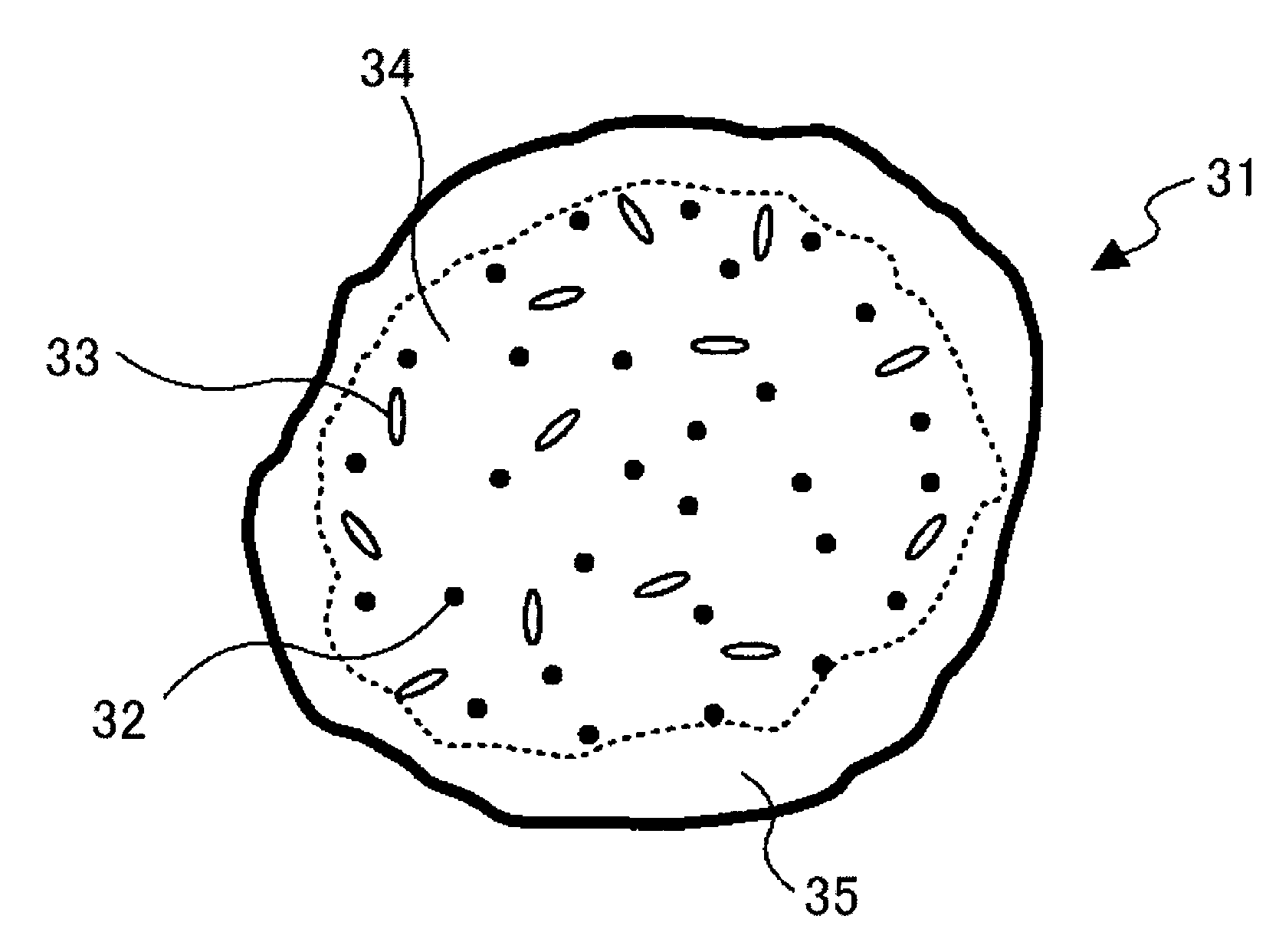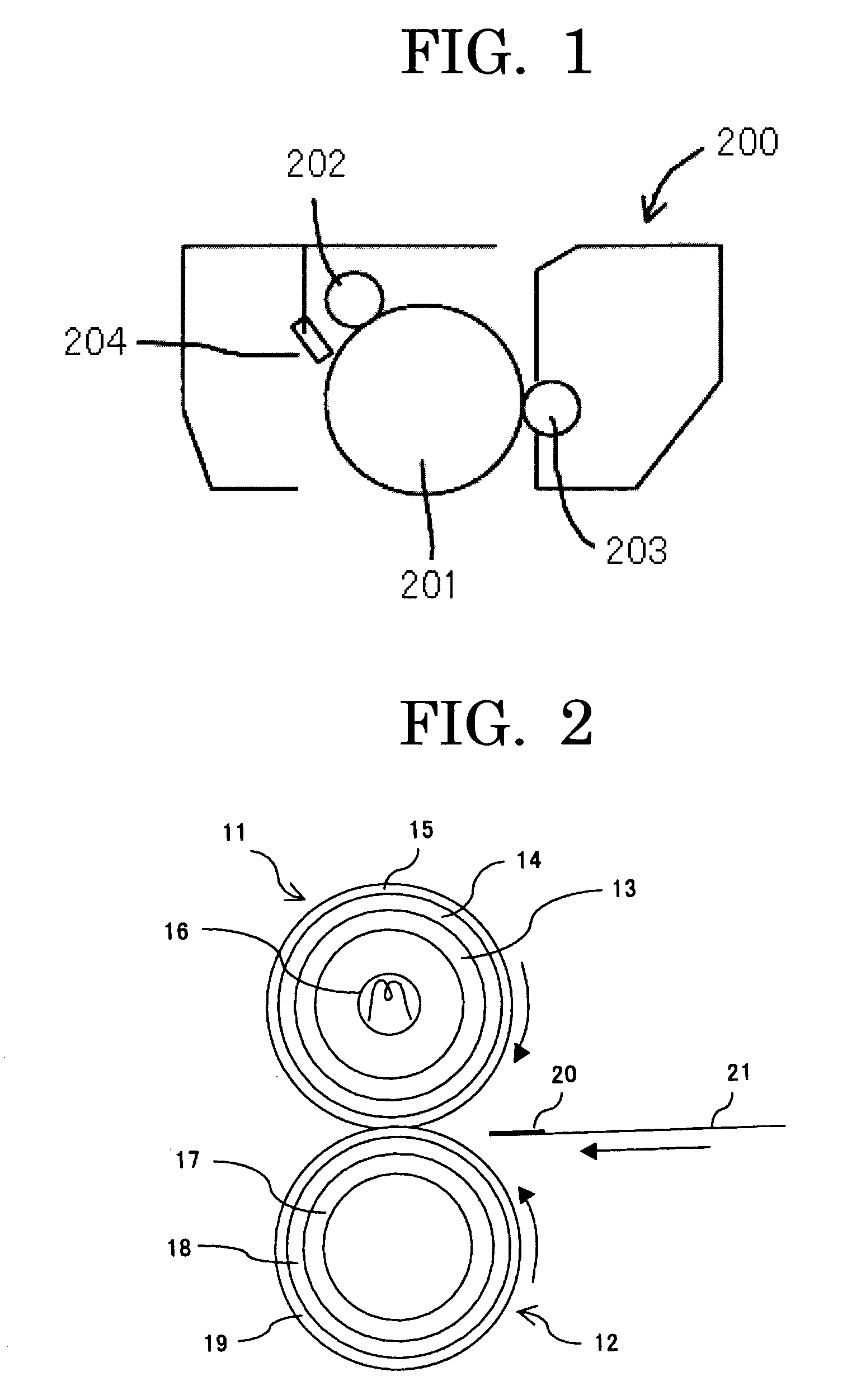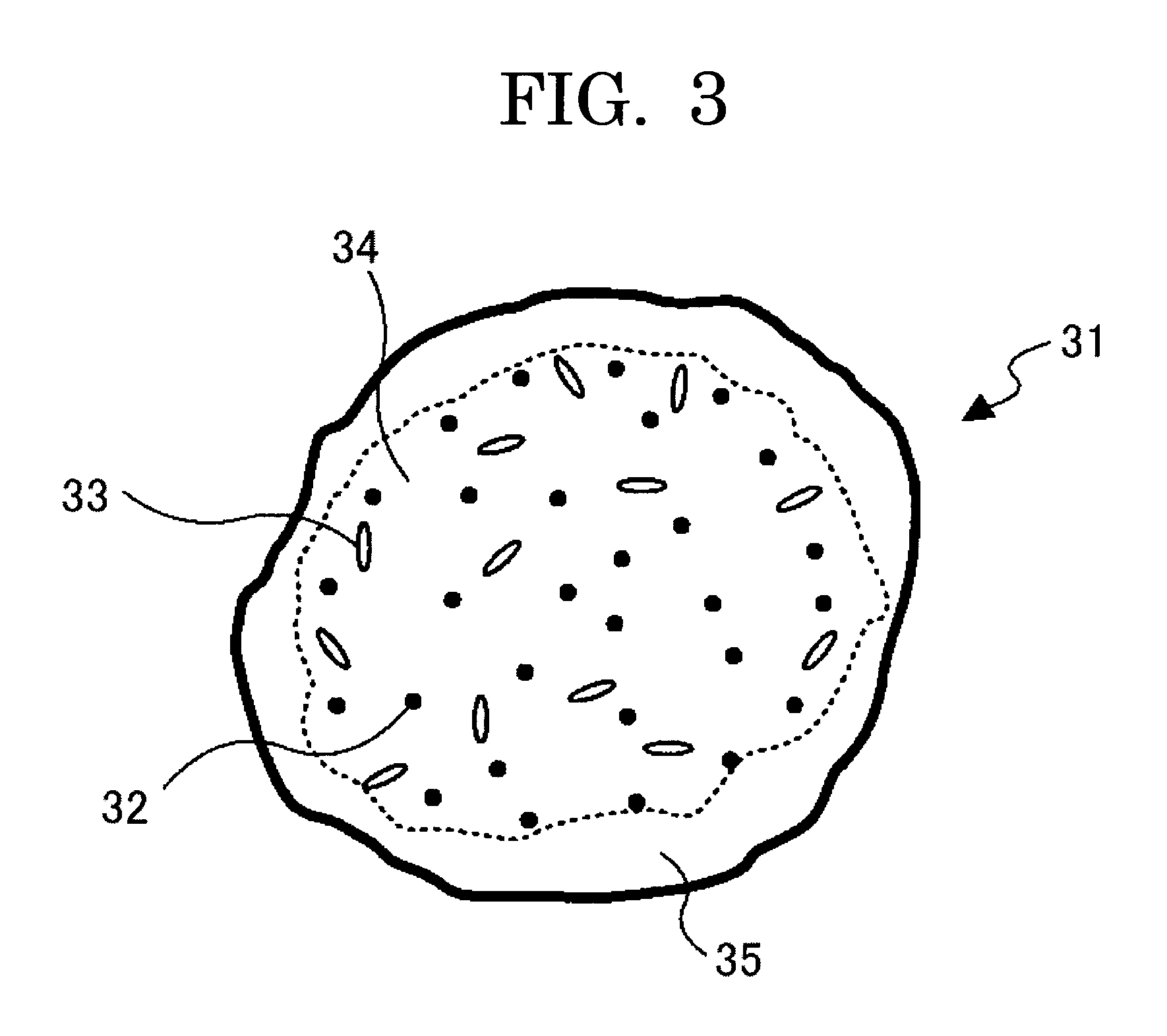Toner for developing electrostatic images, production method thereof; developer, image forming method, image forming apparatus, and process cartridge
a technology for developing electrostatic images and production methods, which is applied in the direction of electrographic processes, electrographic processes using charge patterns, instruments, etc., can solve the problems of low thermal properties, low operation cost, and pollution of recording sheets, and achieves controllable structure, no contamination of developing devices, and no off-set resistance.
- Summary
- Abstract
- Description
- Claims
- Application Information
AI Technical Summary
Benefits of technology
Problems solved by technology
Method used
Image
Examples
synthetic example 1
-Synthesis of Polyester Resin1-
[0267] In a reaction vessel equipped with condenser tube, stirrer, and nitrogen inlet tube, 553 parts of bisphenol A ethyleneoxide dimole adduct, 196 parts of bisphenol A propylene oxide dimole adduct, 220 parts of terephthalic acid, 45 parts of adipic acid, and 2 parts of dibutyl tin oxide were placed, and the reaction was performed under normal pressure at 230° C. for 8 hours. Further, the reaction was performed under a reduced pressure of 10 mmHg to 15 mmHg for 5 hours. Then, 26 parts of trimellitic anhydride was placed in the reaction vessel, and the reaction was performed under normal pressure at 180° C. for 2 hours to prepare “polyester resin 1”. The “polyester resin 1” had a number average molecular mass of 2,200, a mass average molecular mass of 5,600, a glass transition temperature (Tg) of 43° C., and an acid value of 24 mgKOH / g.
synthetic example 2
-Synthesis of Vinyl Copolymer Resin V-1-
[0268] In a reaction vessel, 200 parts of tetrahydrofuran was placed, and the temperature was raised to a reflux temperature. A mixture of 60 parts of styrene monomer, 25 parts of n-butyl acrylate, 15 parts of methacrylic acid, 2 parts of octyl mercaptan, and 1 part of 2,2′-azobisisobutyronitrile was dropped therein over 4 hours. Further, a mixture of 0.1 part of 2,2′-azobisisobutyronitrile and 5 parts of tetrahydrofuran was dropped, polymerization was completed under reflux, and tetrahydrofuran was removed to obtain “vinyl copolymer resin V-1”. The “vinyl copolymer resin V-1” had a number average molecular mass of 3,200, a mass average molecular mass of 8,500, a glass transition temperature (Tg) of 61° C., and an acid value of 95 mgKOH / g.
synthetic example 3
-Synthesis of Vinyl Copolymer Resin V-2-
[0269] In a reaction vessel, 200 parts of tetrahydrofuran was placed, and the temperature was raised to a reflux temperature. A mixture of 60 parts of styrene monomer, 25 parts of n-butyl acrylate, 15 parts of methacrylic acid, 2 parts of octyl mercaptan, and 1 part of 2,2′-azobisisobutyronitrile was dropped therein over 4 hours. Further, a mixture of 0.1 part of 2,2′-azobisisobutyronitrile and 5 parts of tetrahydrofuran was dropped, polymerization was completed under reflux, and tetrahydrofuran was removed to obtain “vinyl copolymer resin V-2”. The “vinyl copolymer resin V-2” had a number average molecular mass of 4,400, a mass average molecular mass of 10,500, a glass transition temperature (Tg) of 67° C., and an acid value of 30 mgKOH / g.
PUM
| Property | Measurement | Unit |
|---|---|---|
| acid value | aaaaa | aaaaa |
| acid value | aaaaa | aaaaa |
| temperature | aaaaa | aaaaa |
Abstract
Description
Claims
Application Information
 Login to View More
Login to View More - R&D
- Intellectual Property
- Life Sciences
- Materials
- Tech Scout
- Unparalleled Data Quality
- Higher Quality Content
- 60% Fewer Hallucinations
Browse by: Latest US Patents, China's latest patents, Technical Efficacy Thesaurus, Application Domain, Technology Topic, Popular Technical Reports.
© 2025 PatSnap. All rights reserved.Legal|Privacy policy|Modern Slavery Act Transparency Statement|Sitemap|About US| Contact US: help@patsnap.com



